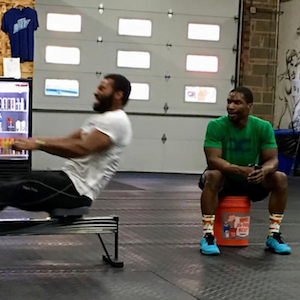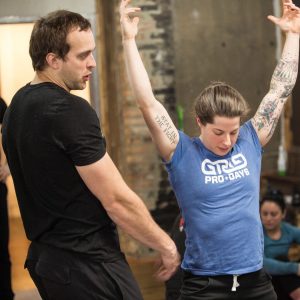If you start taking a look at fitness celebrities on social media, their timelines are full of inspirational quotes.
There's all kinds of stuff out there about pushing harder, never quitting, never backing down, and not making excuses.
While having grit and a willingness to endure short-term pain for long-term progress are both essential for people looking to achieve maximum results in fitness and in competition, like most things, there is a pendulum that can swing too far.
Many highly motivated people – including both CrossFit competitors and Type A professionals – really want to improve.
They want to push hard.
They want to get results.
If a bit of extra work, time and suffering will get them to their goals faster, they want to take that extra step.
However, there's often a disconnect and an assumption that, in order to get better results, they need to just keep pushing harder.
In most of these people, there's no shortage of a willingness to suffer or a willingness to do additional work in the gym.
However, adaptation over the long-term is much more complicated than this.
Improving in the gym is not a linear process, and going harder in training day-to-day does not necessarily mean that your overall progress will improve. Adding five pounds to your working sets on your back squat today doesn't mean that your max will improve when you test it next. And, especially for competitors, it doesn't mean that you're going to perform at a higher level when you step out onto the field for your next event.
Over the last few months, we've been hosting group training events at SLSC that have been attended by some very high level athletes – folks who have competed individually at the CrossFit Games for multiple years, top ten Regionals finishers, multiple year affiliate team members, and folks who are consistently in the top 200 in the Open in their region.
As we've hosted these sessions, we've heard feedback from people who are surprised that the athletes at the next level up from them aren't killing themselves on a day-to-day basis. They're doing the same type of training – just with more weight, better times, better movement, and better recovery. They still take their two minute rest between sets of back squats. They still have good lifts and bad lifts.
It's not about pushing more during training – it's about progress over time, maximizing your own potential, and showing up to compete on game day.
Listen Here
- iTunes
- Overcast
- Google Play
- mp3
- Or stream here:
Show Notes
- [0:00] Introduction
- [4:45] What is the biggest mistake being made by competitors in terms of going too hard?
- [7:33] What do you want to see from athletes and what mentality do they need to do day-to-day?
- [16:18] Does training in a group allow you to push yourself harder?
- [22:34] It's not that you shouldn't push hard, you should do it when it's appropriate.
- [25:28] As a coach, how do you address an athlete going too hard?
- [30:00] For a competitor, when DO they need to be going harder?





